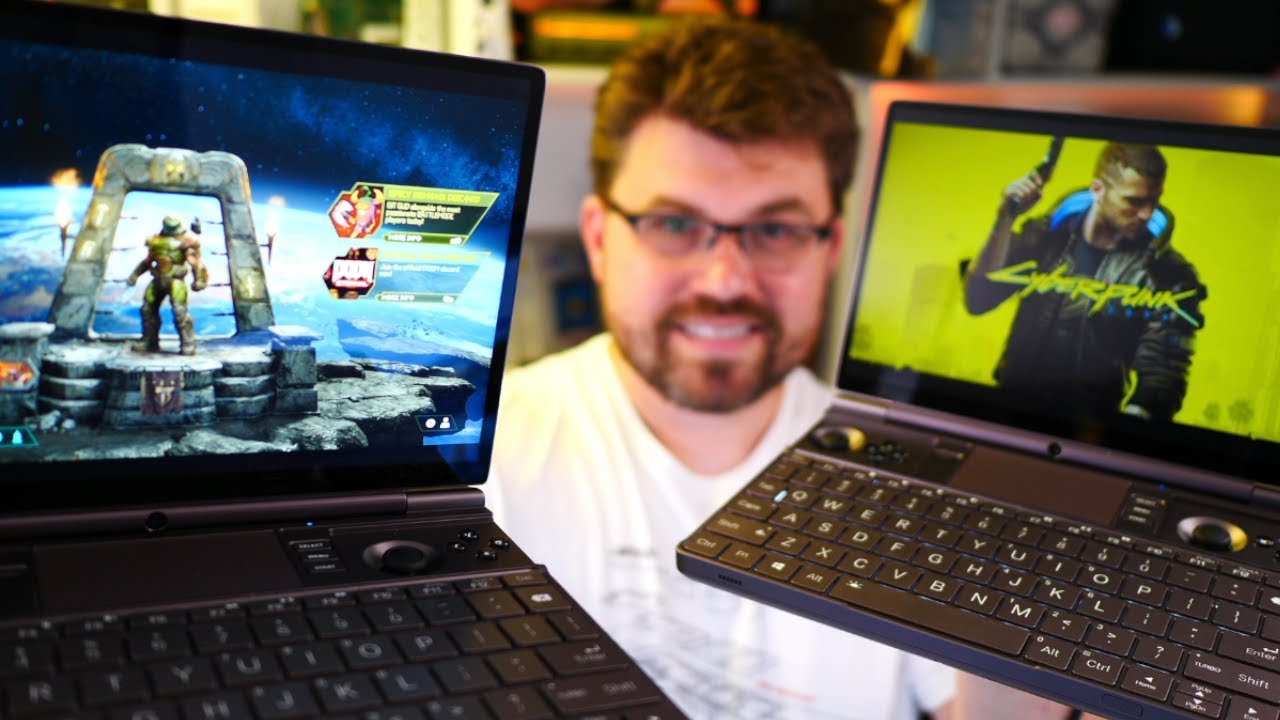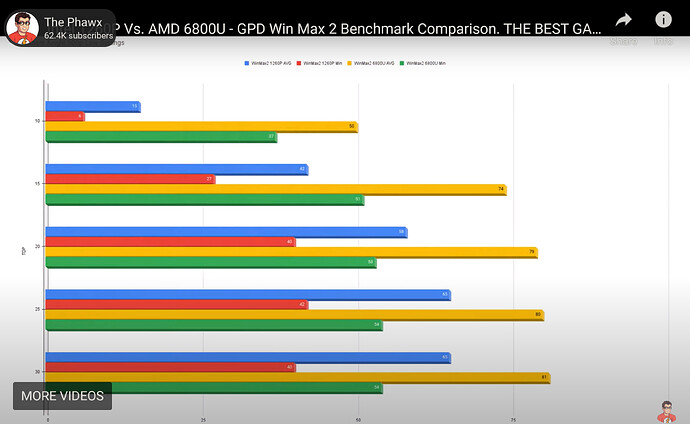I cannot speak to GPD’s engineering team, but there is at best a stark divergence in their corporate ethics in their marketing department that compels me on moral and ethical grounds to refuse to recommend them at this time. Namely, GPD’s marketing team has been on record lately for being caught red-handed in hurling libel against Valve (source: GPD: Steam Deck is WORSE than WIN 3, it is a Closed Platform, and besides, you’ll need Windows to play Pirated Games : SteamDeck (reddit.com)) as well as appropriating third-party content without proper authorization or attribution (source: GPD are getting quite desperate against the Steam Deck | GamingOnLinux). Specifically, in their libelous attacks against Valve, this marketing piece that immediately follows is stunningly bad, going as far as calling the Steam Deck a closed platform which is pure malarkey. Never mind that they are officially encouraging the use of pirated games as the basis of their argument! In fact, if GPD had a corporate nexus in the United States, I reckon they would put themselves immediately within the crosshairs of Valve’s legal department for publicizing such inflammatory claims:
Today we are talking about the recently hyped Steam deck! Because many players are interested in this product, however, more rational players have different views on it of course. I will analyze this product from the configuration perspective and Gabe’s existing resources.
First of all, let’s take a look at the detailed comparison table of WIN 3, WIN Max 2021 and Steam deck.
As you can see above, the Steam Deck is using a custom APU, the CPU part is still ZEN2 architecture, there is nothing outstanding. What is the level of Steam Deck’s CPU? If we have to compare it with AMD’s product, it’s the AMD Ryzen 3 5300U. The 5300U is ZEN2 architecture, 4C/8T design, base frequency/routing frequency is 2.6GHz/3.8GHz respectively. Steam Deck is also ZEN2 architecture, 4C/8T design, base frequency/routing frequency is 2.4GHz/3.5GHz respectively. 5300U is obviously slightly higher than the latter. This does not take into account the full-core frequency, but we can roughly estimate between 3.0~3.2GHz. What is the level of 5300U? It’s just a little bit better than the Ryzen 4500U, so the Steam Deck’s custom APU is even worse than the 5300U, it is obviously not much better, with a single-core Raid of 3.5GHz, which is lower than both the 1165G7’s 4.7GHz and the 1195G7’s 5.0GHz.
What is the level of Steam Deck’s GPU? Both the 1165G7 and 1195G7 are Iris Xe cores with 96EU/768 stream processors and 1.6TFlops of single-precision floating-point computing power. The number of stream processors is the same as that of the previous generation Vega 8 core, and Steam’s officially announced single-precision floating-point computing capability for the core is 1.6TFlops. Although RDNA 2 is a new architecture, the floating-point capability has not improved much, if it is Vega 8, the single-precision floating-point operation is about 1.2~1.4TFlops, and the RDNA 2 is only improved to 1.6TFlops. tied with the Iris Xe 96 EU.
If you rank the single-core, multi-core, and core performance, where does Steam Deck’s custom APU stand? The CPU rank has already been mentioned. Considering that the RDNA 2 has far fewer stream processors than the Xe 96EU, the improvement is partly based on the speed increase from the shared DDR5 memory for graphics and partly based on the architecture update. But overall, I still believe that the RDNA 2 core is weaker than the Xe 96EU core, after all, 512 stream processors to beat 768 stream processors, unless AMD has the magic skill to defy the laws of physics. Besides, the conclusion of the Xe 96EU test is no secret, 1.6TFlops is a conservative figure, RDNA 2 is really just Gabe’s own words without evidence.
Steam Deck may disappoint Gabe/Valve’s fans!
From its low efficiency in rendering games and its announced 15W TDP power consumption limit, I can clearly say that the overall performance of Steam Deck is not the level of GPD WIN 3. But if the Steam Deck supports Windows 10, with 15W power consumption, it may beat WIN 3 with 15W, after all, supporting LPDDR5 and quad-channel is an advantage. So we’ve basically come to the conclusion that the Steam Deck’s custom APU is the equivalent of AMD’s Ryzen 3 5300U + Iris Xe 96 EU core. Considering that the CPU part is far weaker than the 1165G7 and 1195G7. The overall performance of Steam Deck is still not as good as WIN 3 and WIN Max 2021.
What can the Steam OS do? Many people see that Steam Deck is integrated with Steam OS out-of-the-box and say that they don’t need to configure anything. Steam OS is a simple version of Debian 8, a Linux distribution. If you know Steam OS well, you should know that Steam Deck is basically a download interface for the Steam platform. The entire interface is working for game downloads, and that’s it. You say it’s also a PC, but sorry, you can’t do anything other than play games. For example, if you want to install a LibreOffice for office work, you should be able to install it in theory, after all, it is based on Linux 4.2 kernel, but no one knows how it works without a desktop, and whether it can switch to other application interfaces.
Let’s list some weaknesses of Steam Deck that everyone recognizes 1. 30 cm length, large size, far from the definition of handheld. 7-inch screen Steam deck than the 8-inch screen WIN Max 2021 is a full 1/3 larger. 2. small battery capacity, only 40Wh, while the battery capacity of WIN 3 is 46Wh, WIN Max 2021’s battery capacity is 57Wh. 3. does not support Thunderbolt 4, a single application scenario can only play games. 4. There are too many uncertainties, such as whether there is corresponding driver support after installing Windows 10. For example, whether the 2230 SSD can be replaced (Steam official said not suitable for replacement), what are the compatibilities?
Don’t kid yourself! The only reason Gabe created this product is to make a closed system, not to let you install Windows to play pirated games!
Steam Deck has support in its platform, there are 1 billion registered users, Gabe’s purpose is to create a closed system, just like the Nintendo Switch, their ultimate goal is to attract game companies to develop exclusive games for their handhelds, as long as there is a large enough user base, there definitely will be exclusive games. And with exclusive games, you can compete with the Switch. It also avoids the disadvantage of being a single download platform to compete with Epic and so on.
Therefore, although Gabe had verbally said to support Windows (I can’t find the source), it makes some people think that Gabe’s goal is ambitious. I think you’re too naive, you do not understand the logic of capitalists. Think about it, losing money to sell Windows 10-compatible hardware for players to play pirated games, what does he want, just want to make you laugh? No capitalist will lose money to make money.
In the end, whether it’s called the Steam Deck or Steam Deck XX, it’s a closed system (capitalist will reveal its hideous face when there are enough users) and the hardware will prevent you from installing any third-party systems. You can only buy games from the Steam platform.
Will Epic also build its own handhelds? Epic will definitely launch its own handheld sooner or later to create its own closed platform. So, the future pattern is that the game download platform still has Windows support, but the exclusives will first release on their own platform, and then release the Windows version much later.
Besides, if you want to play pirated games, you still have to go back to Windows.


